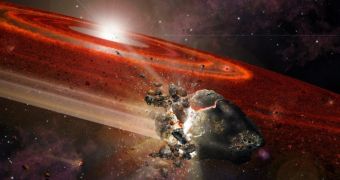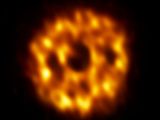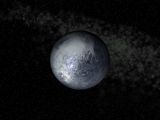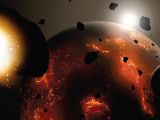Things might be calm and peaceful here on Earth around the holiday season, but a lot of commotion is going on in space. For instance, astronomers say that an army of celestial bodies are now swirling around a nearby star.
The star is question is known to the scientific community as HD 107146 and is located at a distance of about 90 light-years from our planet. The star is said to have formed about 100 million years ago, which makes it quite young.
Truth be told, scientists are yet to catch a glimpse of the objects themselves. For the time being, they can only infer their existence from the massive amounts of dust that they are creating and that were documented by the Atacama Large Millimeter/submillimeter Array.
Researchers with the Harvard-Smithsonian Center for Astrophysics explain that, in the so-called protoplanetary disks that form around young stars, dust grains usually build up in the regions that are closer to the core.
In the case of HD 107146, however, remarkably high concentrations of dust grains were found at a distance of about 13 billion kilometers (about 8 billion miles) from the central region. It is believed that these dust particles originate from Pluto-sized objects.
More precisely, scientists theorize that the dust comes from fairly large objects that are orbiting the star at a considerable distance and that are forever colliding with each other and getting destroyed in the process. The inner region of the disk, on the other hand, is probably a more peaceful place.
“It is possible that we caught this particular debris disk at a stage in which Pluto-size planetesimals are forming right now in the outer disk while other Pluto-size bodies have already formed closer to the star,” said researcher Luca Ricci.
Interestingly enough, evidence indicates that the protoplanetary disk surrounding HD 107146 also sports a depression that is about 1.2 billion kilometers (0.74 billion miles) wide. It could be that this depression formed because of a young planet that swept through the region.

 14 DAY TRIAL //
14 DAY TRIAL // 



